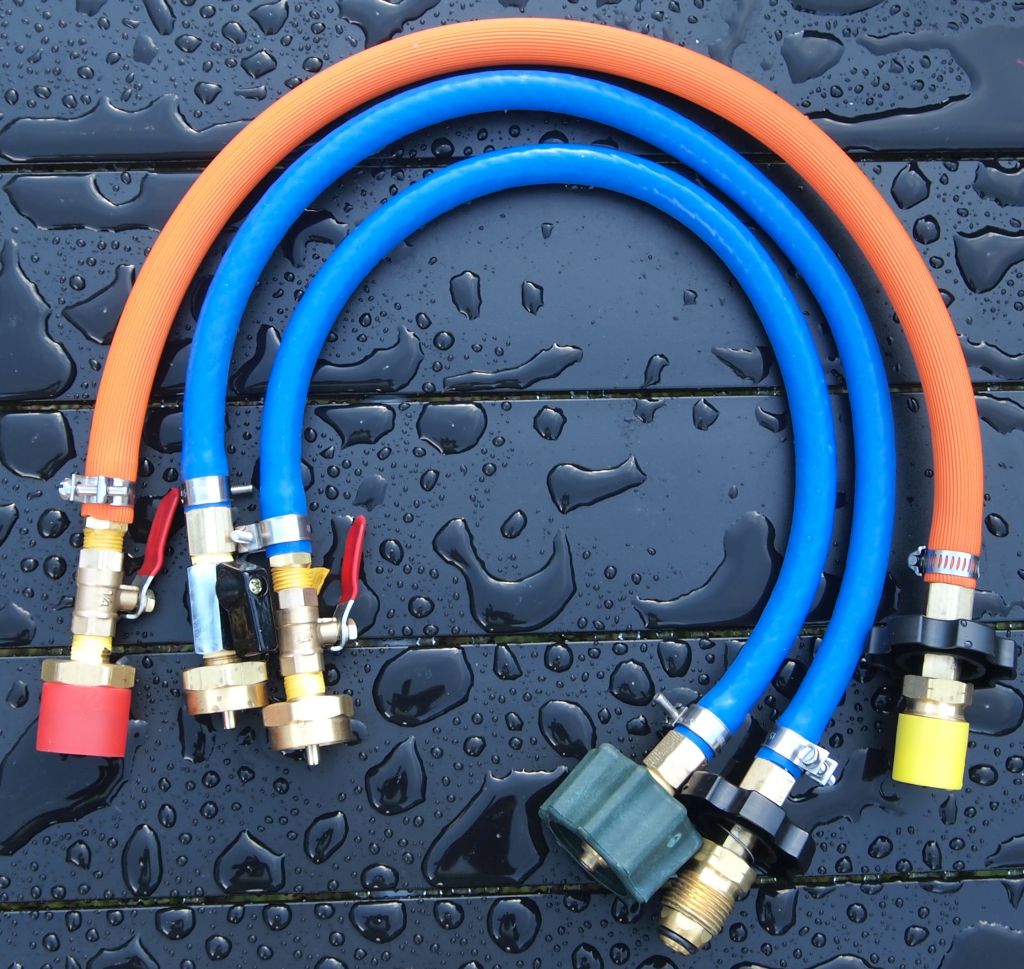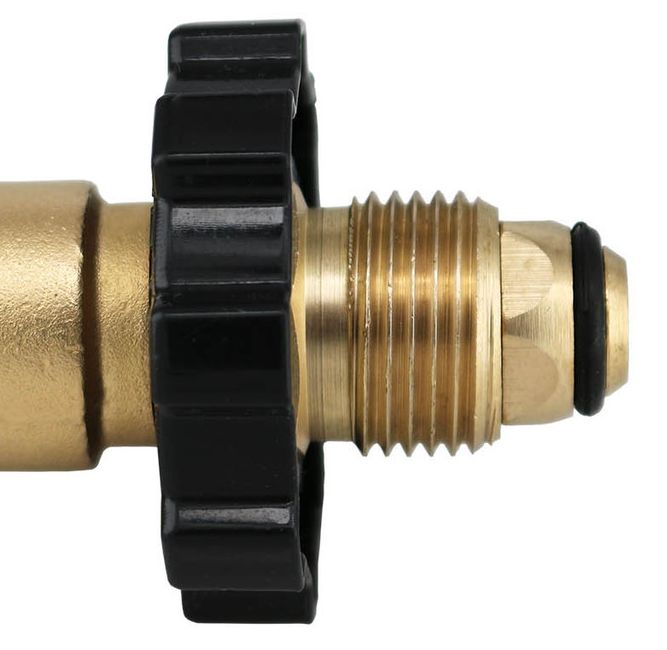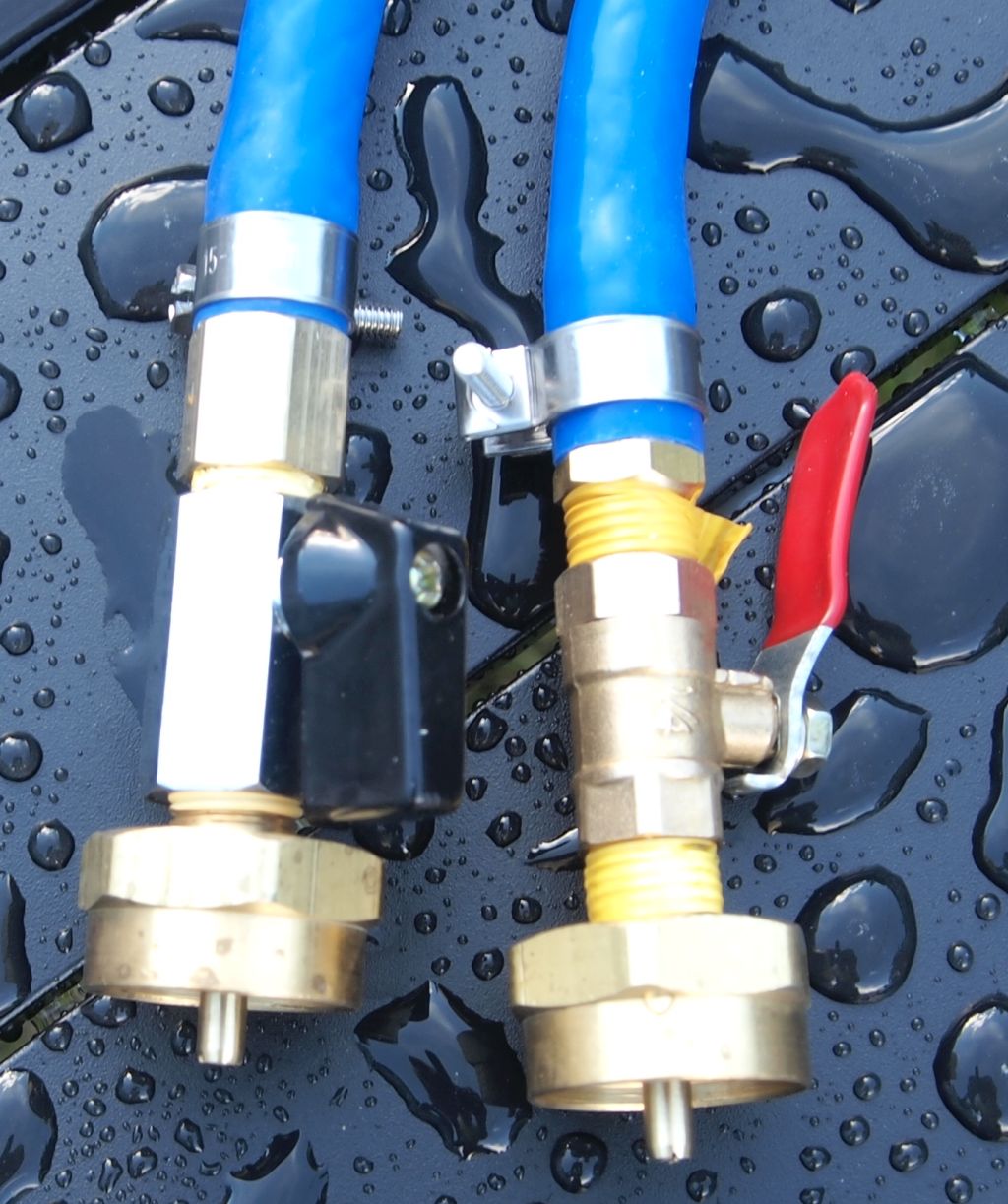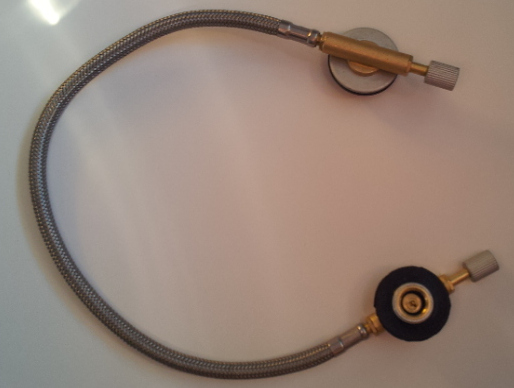◘ Propane refill line. $39.95 USD. (Shipping via Tracked Packet is $16.50). This line allows 1lb propane bottles to be connected to larger tanks for refilling. We developed this line because we could not find anything commercially available that would enable the 1lb bottle weight to be monitored on a scale while filling, which is a safer way to carry this procedure out as it prevents overfilling. The line comes in various colors of hose and different valve types as shown because we often have trouble finding a consistent supply of the same items from the same supppliers. They are also available with the newer type Acme connector, or the POL connector for the traditional style propane tanks. These lines can also be modified to use another connector to join the double ended butane canister fuel line shown on the right (see winter fuel mix page for more details). If you wish to purchase one of these, send us an email, and we'll send payment instructions back.

Available with POL connector:

or Acme connector (fits newer style tanks):


Standard Coleman connector for 1lb bottle (type of flow valve may vary):

Almalgamating Partly Full Butane Stove Canisters
The materials you need to do this are a double ended canister fuel line, a kitchen scale, safety glasses and protective gloves.
Start by marking your partially full canisters with a Sharpie using identifiers such as 'S' (for slave) and , 'D1, D2...' (for donors). Then weighing your slave and donor canister(s) and make a note of the gross weight. For example the gross weight of the smallest MSR Canister, when full, is 211G. The 'net' weight is the amount of fuel it is designed to hold, which is 110G. That means the 'Tare' of your canister is 101G. So if you are dealing with all of the small canisters for example, and the slave comes off the scale at 126G, you know that the canister you intend to top-up is already about 1/4 full, and your aim is to add up to another 85G of fuel from the donor(s). Do the same weight calculations with the donor canisters in order to determine how much fuel they have remaining that can transfer to the slave. Let's imagine in this example we have 3 donors that have 30G each in them.
Now place your slave canister in the freezer, and your donors in warm water (about 50C is good) for about 15 - 30 minutes (rewarming the water if necessary). When your canisters have become isothermal, don your safety gear and connect the slave to the first donor in a work area where it is safe to do so. Set the slave on the scale (which is on a flat surface) in an upright position, and suspend the donor upside down above it. If you do not have an assistant, then you'll have to improvise a system to fasten the donor canister, (I use a bike repair stand setup beside a picnic table). Zero out the scale, then open the valves on each end of your fuel line and liquid fuel will start to flow out of the donor and into the slave canister. When the scale records no more fuel moving into the slave, close both valves (remember the maximum about you would be able to get from the donor was previously determined to be no more than 30G). Separate the canisters and weigh them both to determine how much fuel was transferred. If you were able to get 30G transferred, you'd still have enough capacity in the slave for another 50G. So place your slave back in the freezer for awhile until you suspect it is isothermal again (typically 5-10 minutes). Now it's time to repeat the process with donor canisters #2 and #3, keeping the donors warm and the slave as cold as possible by rewarming and rechilling as required. When your slave finally comes off the scale at around 211G, then it is time to mark it with which refill number this was (some people feel most comfortable just refilling a couple of times and then disposing, while others monitor the condition of the canister visually and by applying soapy water around the Lindal valve and disposing when they see fit). If you overfill, release pressure in a safe environment by venting the Lindal valve until the canister is back at its rated Gross Weight.
Canisters should not be stored indoors or other enclosed or hot spaces. Do not leave them stored or transport them in the trunk of a vehicle. Like propane cylinders, they are best transported on the floor of the back seat with windows opened enough to allow for air circulation and vehicle occupant (obviously non smoking occupants) awareness and quick reaction in case they should unexpectedly vent for any reason.
Once you have mastered this aspect of canister refilling, you may want to expand your horizons further and use those n-Butane bottles sold in Asian markets as a cheap source of butane fuel, and even start mixing propane with butane to create a winter mix suitable for cooking with a canister stove at -20C or colder.



